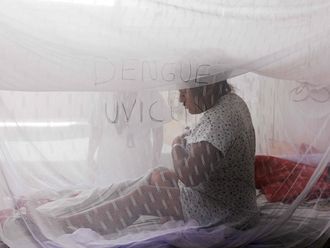San Juan, Puerto Rico: Hurricane Earl was upgraded to a category four storm on Monday as it brushed past Puerto Rico and headed for the eastern US coast, amid warnings it may cause catastrophic damage.
Packing fierce winds of up to 215 kilometers an hour, Earl was raised to a category four as it churned across the Caribbean, with experts forecasting it may skim the eastern United States coast later in the week.
On the five-point Saffir-Simpson scale used by the US National Hurricane Center, a category four storm carries a warning that "catastrophic damage will occur" with a high risk of structural damage.
"There is a very high risk of injury or death to people, livestock, and pets due to flying and falling debris," the centre says on its website of a category four storm.
Earl was churning west-northwest at 22 kilometers per hour, dumping heavy rains and whipping up massive waves as it continued its arc past the Lesser Antilles.
Even though it may strengthen in the next day or so, the storm was not projected to make landfall immediately, and earlier hurricane warnings for Puerto Rico and the US and British Virgin Islands were downgraded.
One weather model has Hurricane Earl skimming the Outer Banks, in North Carolina on Friday, and possibly reaching as far north as the Canadian province of New Brunswick by Saturday.
Midway through the annual Atlantic hurricane season, the eye of the storm passed over the French islands of Saint Martin and Saint Barthelemy early Monday, bringing down trees, blocking roads and snapping power lines.
The French supplier EDF estimated some 3,500 people were left without power in the two islands, and were planning to send in reinforcements from Martinique to repair downed lines. In Guadeloupe another 4,000 people had no electricity.
French Overseas Territories Minister Marie-Luce Penchard told AFP late Monday that it appeared there had been no loss of life.












